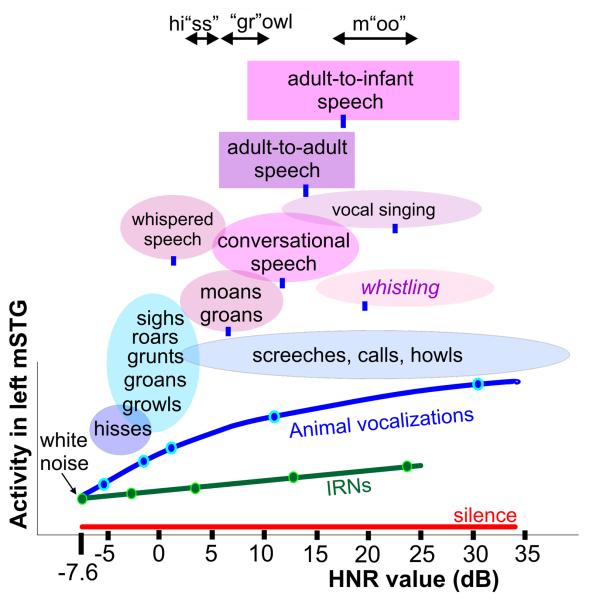Figure 6.
Typical HNR value ranges for various sub-categories of vocalizations. Oval and box widths depict the minimum to maximum HNR values of the sounds we sampled, charted relative to the group-averaged HNR-sensitive response profile of the left mSTG (from Fig. 4d). Green and blue dots correspond to sound stimuli illustrated in Fig. 1a-b. Blue ovals depict sub-categories of animal vocalizations explicitly tested in paradigm #4. Ovals and boxes with violet hues depict sub-categories of human vocalizations (12-18 samples per category), and blue tick marks indicate the mean HNR value. For instance, conversational speech, including phrases explicitly tested in paradigm #5, had a mean of +12 dB HNR, within a range from roughly +5 to +20 dB HNR. Adult-to-adult speech (purple box; mean = +14.0 dB HNR) and adult-to-infant speech (violet box; mean = +17.2 dB HNR) produced by the same individual speakers were significantly different (t-test p<10-5). Stress phonemes of three spoken onomatopoetic words depicting different classes of vocalizations are also indicated. Refer to Methods for other details.

